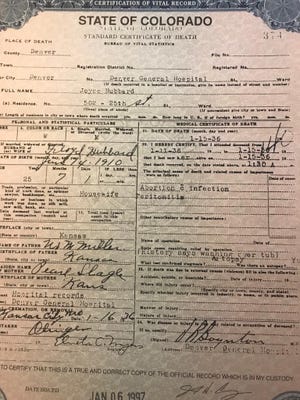
The Supreme Court listened to arguments on Monday about SB-8, the Texas bill that all but bans abortions after six weeks of pregnancy. That's before most women know they're pregnant.
The Texas law is in direct conflict with Supreme Court rulings such as Roe v. Wade and Planned Parenthood v. Casey, which established and reaffirmed that a woman's right to decide what happens to her body during a pregnancy stems from the constitutionally protected right to privacy.
To be clear: The right to an abortion is not directly on the table yet in either of the two cases the Supreme Court is hearing arguments on. Instead, they center on whether abortion providers or the Justice Department can challenge a law that allows private citizen vigilantes to use civil remedies to sue abortion providers.
But as we saw last month, when the court declined to protect women from what Justice Sonia Sotomayor called "grave and irreparable harm," neither precedent nor women's bodily autonomy matter to this court. Roe is unlikely to survive continued attacks.
In Monday's hearings, the justices appeared skeptical of the Texas law, but it does not mean women are in the clear. On Dec. 1, the court is scheduled to hear arguments in Dobbs v. Jackson Women’s Health Organization, which asks the justices to overrule Roe. In other words, the court could throw out the Texas law but still overturn Roe later.
My great-grandmother died from a botched abortion. With Roe possibly doomed at the Supreme Court, prepare to see more women and girls suffer painful deaths as they seek out illegal abortions.

Death by sepsis: an illegal abortion story
It was 1936 when my great-grandmother, Joyce Hubbard, found out she was pregnant again. She was 36.
Before the 1929 stock market crash, the Hubbard-Millar family from Clinton, Missouri, had been well-off cattle ranchers. But seven years later, they could barely feed their four kids and were homeless. Joyce decided to have an abortion, which was illegal at the time.
That decision would take her life and would tragically mark the life of my grandmother, who would be shipped off to live with relatives who was sent to live with relatives as her father battled poverty, alcoholism and depression.
Women have been finding ways to end pregnancies since ancient times. Before Roe, wealthy women were able to travel to Europe to seek abortions. But in 1936, poor women in rural America were left with unappealing ways to end their pregnancy, all of which could result in death for themselves.

In a University of California Irvine's Western Journal of Emergency Medicine article, "The Back Alley Revisited: Sepsis after Attempted Self-Induced Abortion," the writers describe some of the more well-known methods that women used (and continue to use) to induce abortion. There were oral and injectable medications like phosphorus, mercury, lead, kerosene, turpentine and detergents.
There also were coat hangers, knitting needles, sticks and crochet hooks, which were often swarming with bacteria. And then there was self-inflicted abdominal trauma, such as a belly flop onto the floor or ramming one's stomach into the edge of the bathtub.
In the case of my great-grandmother, we never knew the details of her death, except what was listed on her death certificate, "Abortion c [sic] infection. Peritonitis."
She may have developed the peritonitis from a perforation in her uterus, or from non-sterilized instruments that scratched her insides, poisoning her blood with bacteria.
Her death may have been quick, perhaps a matter of hours after the abortion. Or she may have lain in her bed retching for days, raked by fever, cramping, sweats, vaginal bleeding, vomiting and intense pelvic pain as her body attempted, and failed, to fight off deadly bacteria.

Tragedies to come
According to Planned Parenthood, about 25 million women and girls of reproductive age live in states where they are expected to lose abortion access if the United States lets states decide whether to legalize or restrict abortion (as before Roe v. Wade). Also according to the organization, "Overturning Roe v. Wade could put safe, legal abortion out of reach for one-third of people ages 15 to 49 who may need it."
In a 2004 report, the World Health Organization estimated that 68,000 women die due to the complications of unsafe abortions, with sepsis as a major cause. In the United States, we have largely avoided this issue thanks to the availability of access to a legal, safe abortion, guaranteed by the Supreme Court's decisions.
But we should get ready for many more sad stories like those of my great-grandmother if the Supreme Court justices decide to let laws like SB-8 continue or, down the road, overturn Roe.

I am 37, one year older than my great-grandmother was when she died in 1936. It is exceptionally problematic that 85 years after she died, women in the United States are still fighting for the right to make safe choices about their reproductive health.
I will not stand by quietly as women's bodies are again treated as collateral damage in a conservative war on abortion.
My great-grandmother's death was not in vain.
Carli Pierson is an attorney and an opinion writer at USA TODAY. Follow her on Twitter: @CarliPierson









